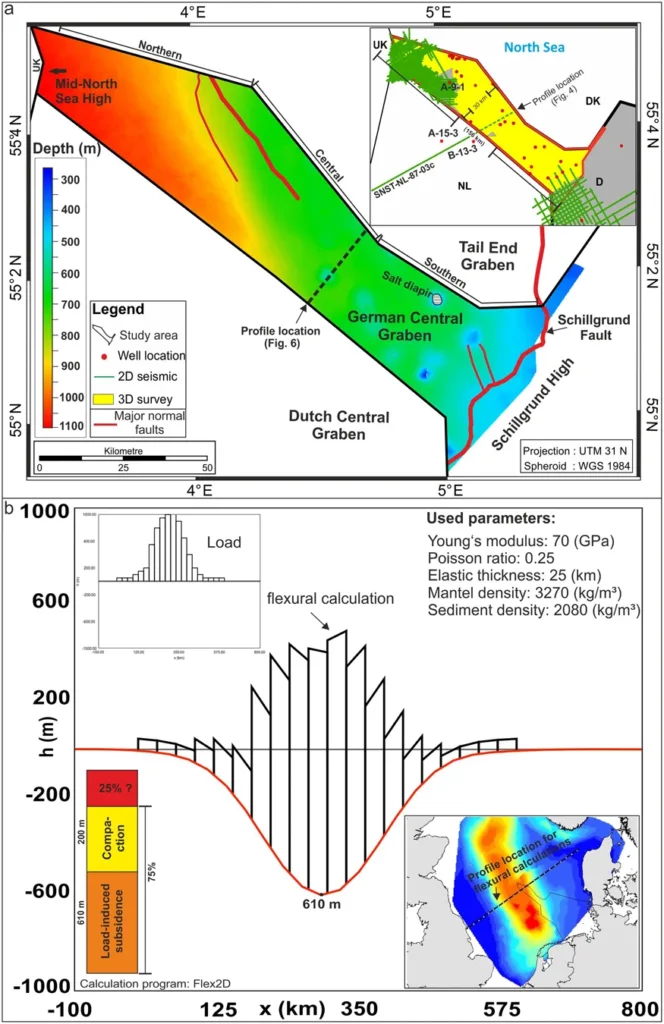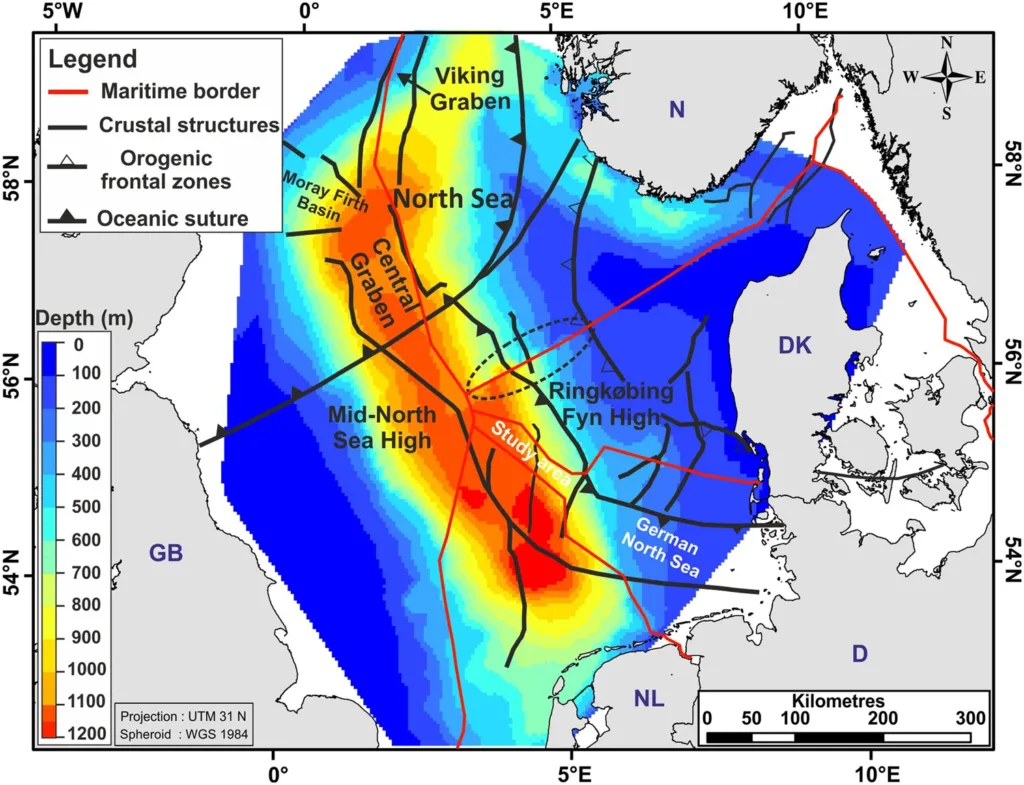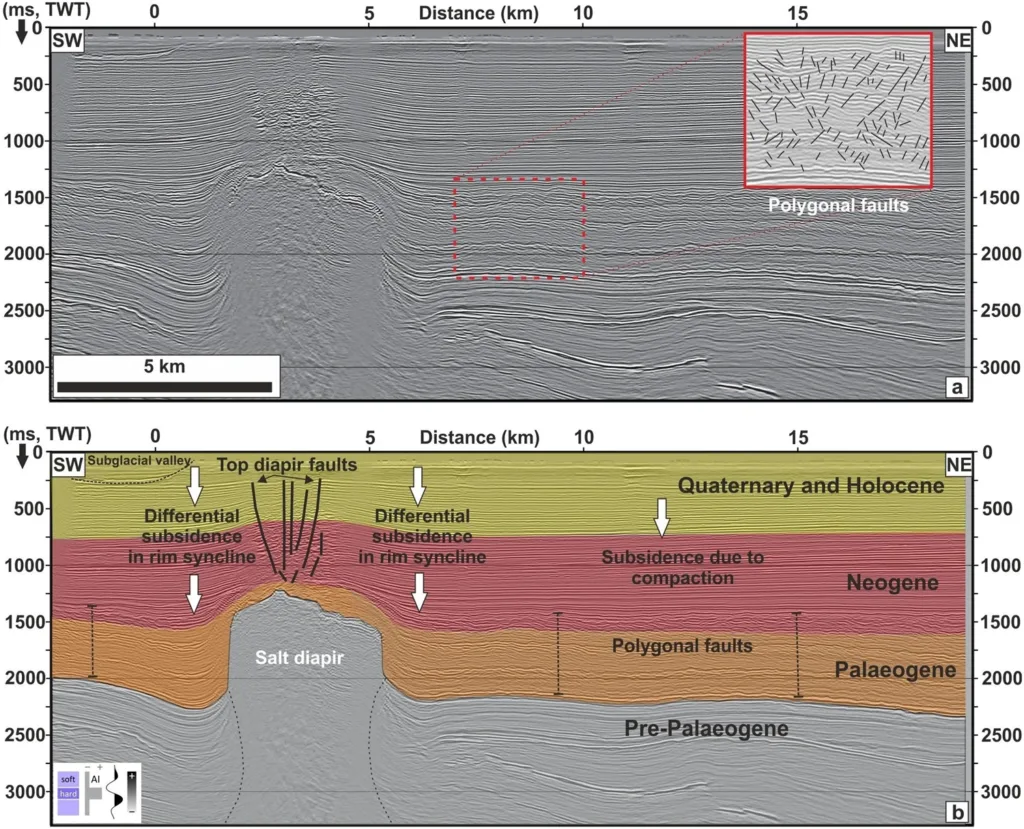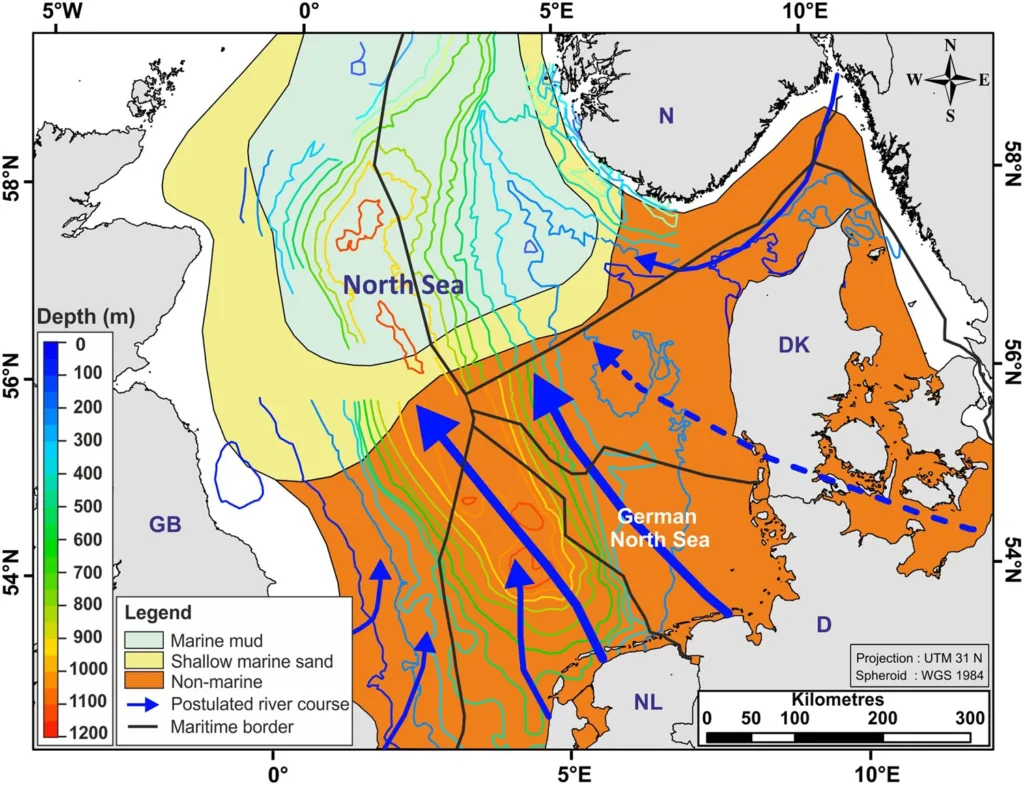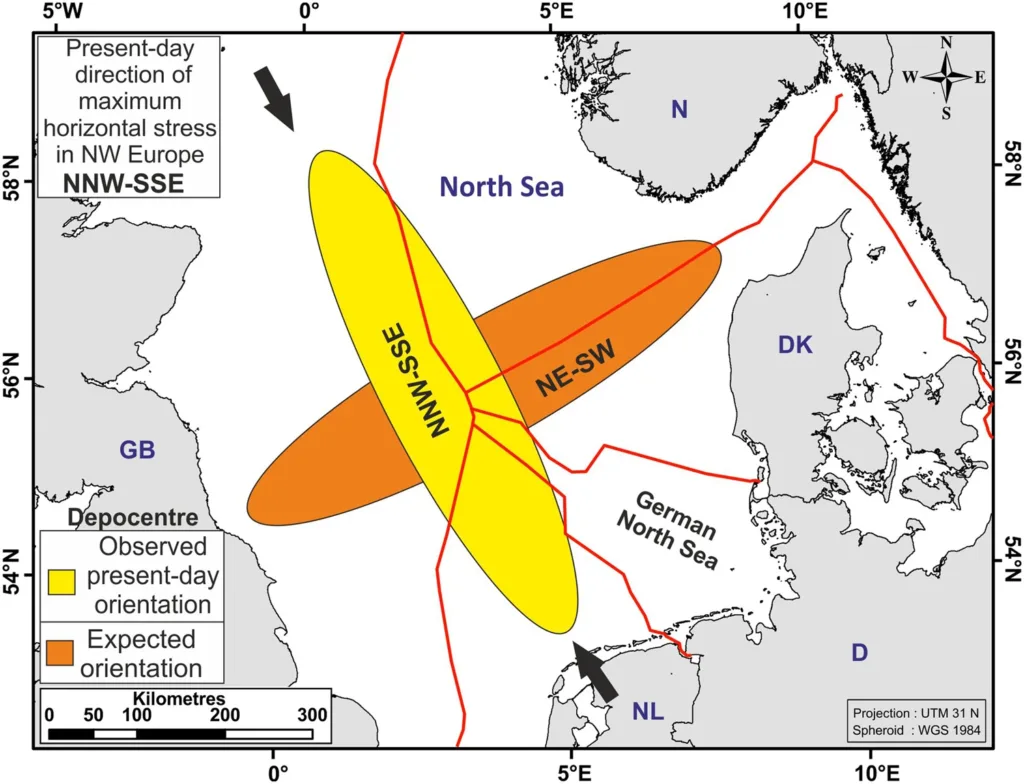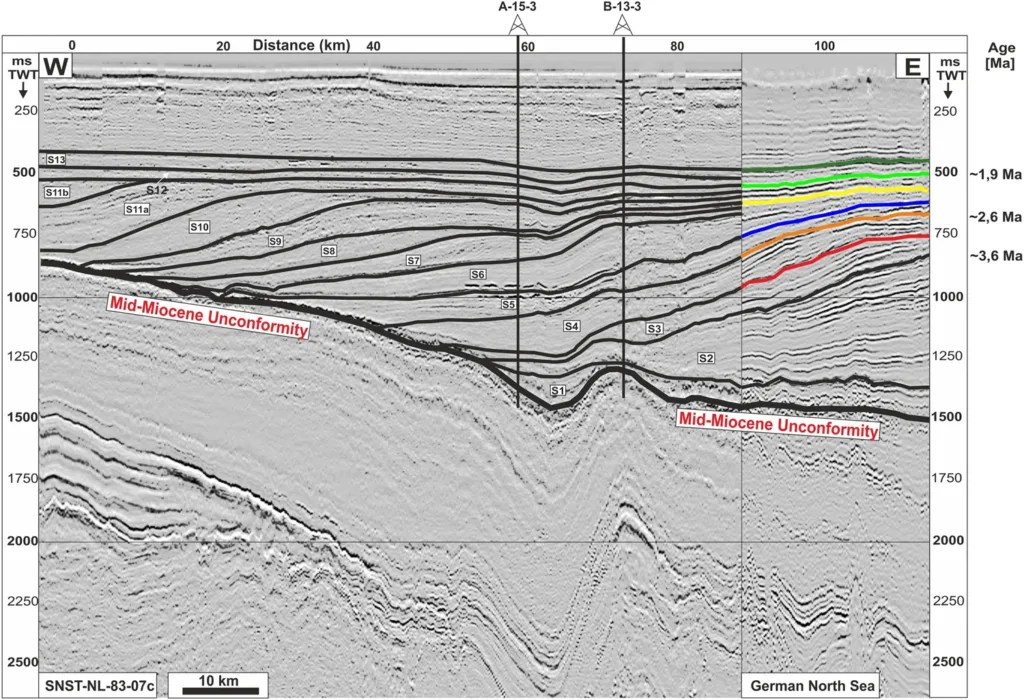DOI https://doi.org/10.1038/s41598-018-29638-6
Abstract
3D and 2D seismic data reveal the base-reflection of the Quaternary in the northwestern German North Sea locally at depths of more than 1000 m. This indicates extremely fast subsidence, with a rate of up to 480 m/Ma during the Quaternary, resulting in a NNW-SSE oriented sedimentary depocentre. Distinct iceberg scour marks, identified in 3D seismic data are used to calibrate quantitative subsidence analysis and to document shallow marine conditions during the Quaternary interglacials. Previously, a number of mechanisms have been proposed to explain the Quaternary subsidence. Here we show that compaction and load-induced subsidence alone explain about 75% of the observed Quaternary subsidence. However, a certain portion of the subsidence needs additional processes to be invoked. The extensive seismic dataset interpreted here makes it possible to exclude a phase of renewed tectonic activity as the origin of the subsidence anomaly. From the orientation and extent of the depocentre, lithosphere buckling and subsidence due to salt movement are considered unlikely. Possibly a post-glacial collapse after the retreat of glaciers in the North Sea Basin, local lower crustal flow, or dynamic topography or a combination of these processes contributed to the residual subsidence.
Arfai, J., Franke, D., Lutz, R. et al. Rapid Quaternary subsidence in the northwestern German North Sea. Sci Rep 8, 11524 (2018). https://doi.org/10.1038/s41598-018-29638-6
